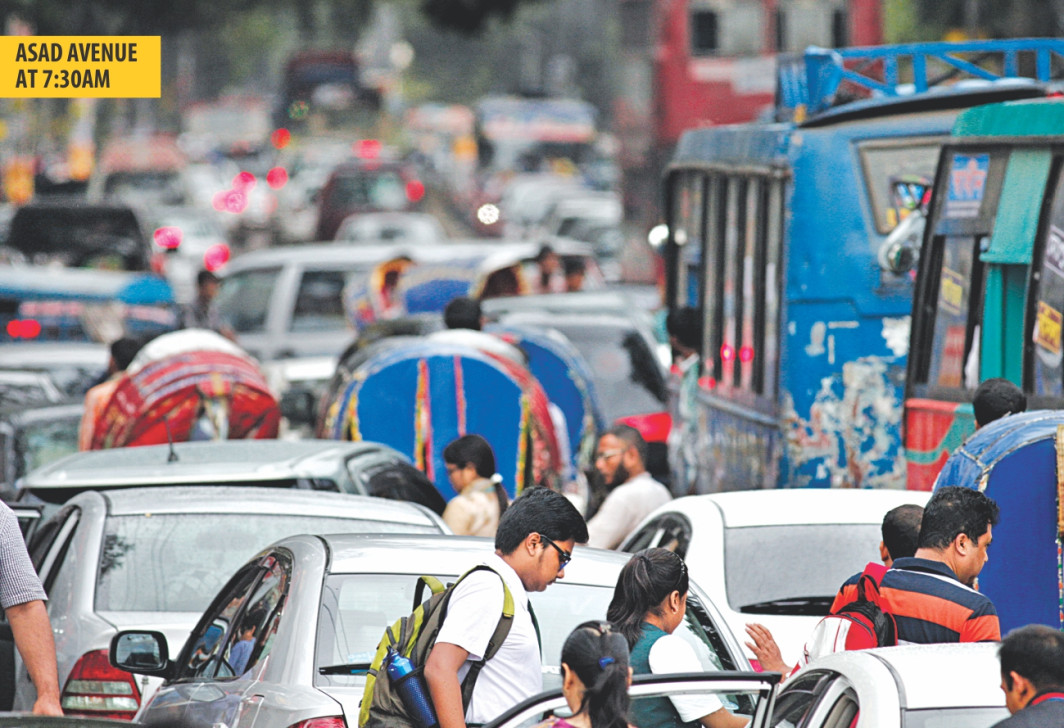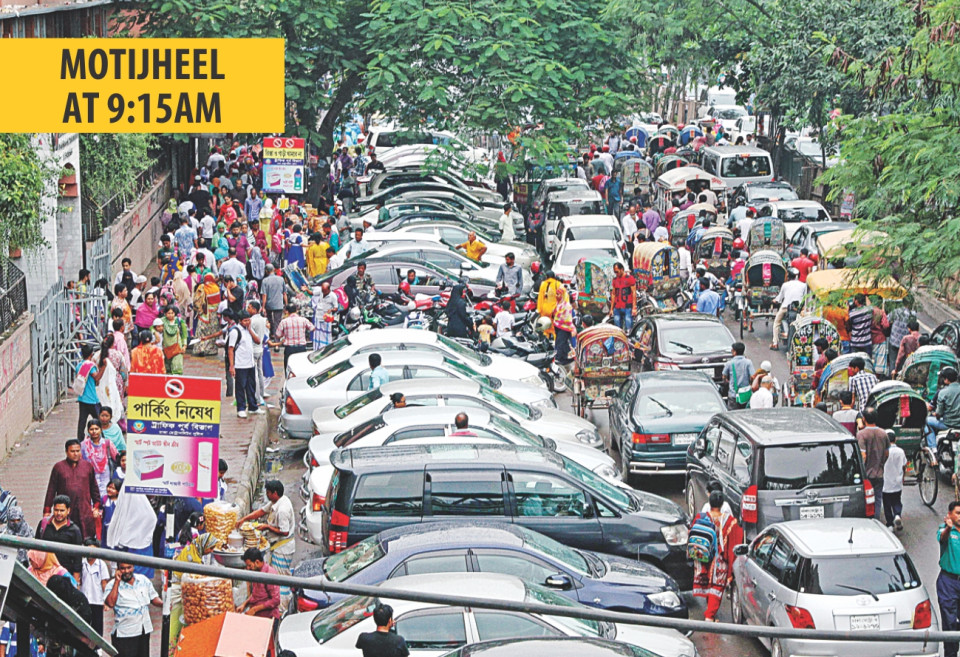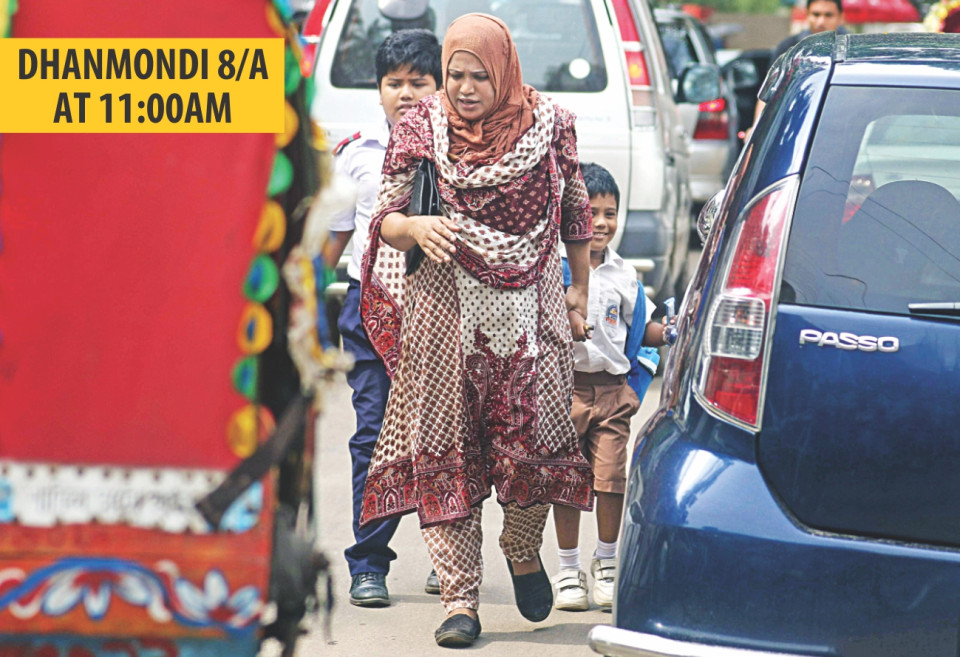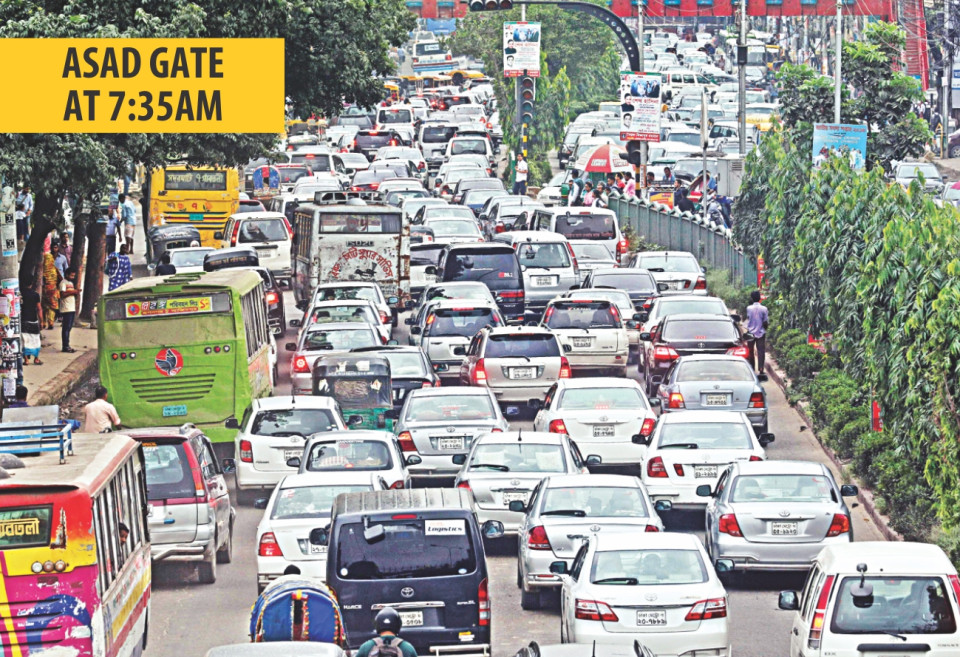Strict traffic management in early hours can make the day tolerable

A proactive role by the school authorities, the guardians and the traffic police in managing traffic could help a lot, they added.
“The most difficult task is to control cars. The owners act as if they are VIPs. They don’t hesitate to park their cars, and pick and drop their children wherever they wish,” a community police member in Mohammadpur area said on Wednesday.
He said the tailbacks can be avoided if all guardians and students get down a little away from the schools and walk to schools.
Most parents take their cars straight in front of the school gates and drop their children there, said Maruf Hossain, who works for a private firm in Dhanmondi.
“It obstructs other cars and contributes to the tailbacks,” he added.
The nightmarish morning jam costs city dwellers both time and money.
“My office is in Bangla Motor. Usually, it is a 30 minute journey from my home, but it takes more than an hour to reach there, thanks to the jam on Asad Avenue,” said Jiban Ahmed, who lives in Mohammadpur Town Hall area.

“To save time, I often jaywalk across Mirpur Road [near Asad Avenue] and take another vehicle to go to work,” he said.
City’s traffic situation deteriorates during the morning when the schools start and in the afternoon when they end, said Farhad, a traffic constable who was deployed near the Mastermind School on Dhanmondi-12.
Lutfar Rahman, who lives in Mohammadpur, said, “When a street gets totally jam-packed with vehicles, traffic police should allow other vehicles to use an alternative street with less heavy traffic. It does not happen in most cases.”
Besides, there should be more coordination between traffic police and community police for better traffic management on different streets, said Kamrul Islam, who lives in Dhanmondi.
Contacted, Shafiqur Rahman, assistant commissioner of Mohammadpur zone (DMP-traffic), said the traffic situation in Mohammadpur and Dhanmondi during the morning hours would improve drastically if the school-goers take school buses instead of cars.

“All the prominent schools should introduce school buses and encourage their students to use them,” he told The Daily Star.
Asked, Shafiqur admitted that they cannot control traffic properly on many streets due to manpower shortage.
“We need some 12 to 15 traffic policemen to control vehicular movement on the intersection in front of Arong. But we have just four to five men,” he said.
“During the school hours, we have to take traffic policemen from other spots and deploy them on the streets near some prominent schools to control the situation there,” he added.
Urban transport expert Prof Shamsul Hoque said in any urban area, school-goers and commuters are the ones who use the streets most.
That is why, he said, an urban area has to be planned in such a way that the two groups do not have to rush to the streets at the same time at the same zone.

He also said in many developed countries, children of a particular area cannot get enrolled to a school outside the area.
“If we can introduce such a system in Dhaka, it will definitely help reduce the morning jam,” said Prof Shamsul, who is also a former director of Buet’s Accident Research Institute (ARI).
The streets of an ideal city should cover 25 of the city’s total area. But in Dhaka, it is just eight percent, he said.
“The number of city dwellers and private vehicles are increasing rapidly. Such low number of streets [in Dhaka] is one of the major reasons behind the tailbacks,” he added.
Currently, over 10 lakh vehicles are registered with the government for operation in Dhaka, according to the statistics of Bangladesh Road Transport Authority (BRTA).
Source: The Daily Star










